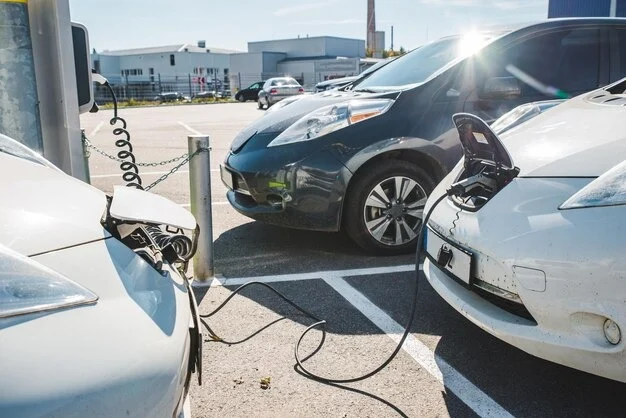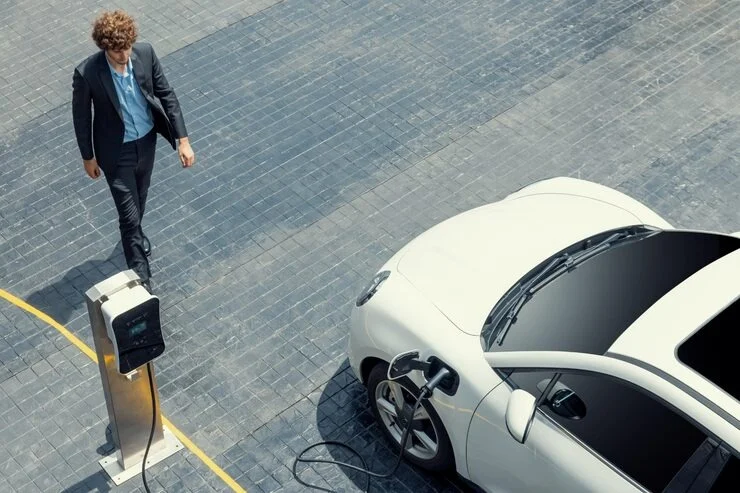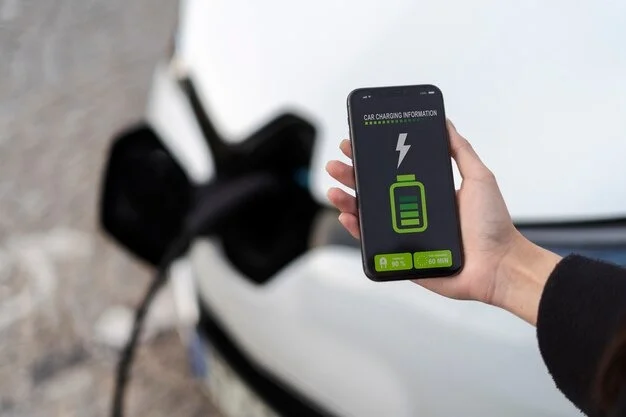Electric Vehicles are promoted as having environmental advantages, less transecting costs, and being at the cutting edge of technology. However, a few restrictions remain for electric vehicles, just like any other vehicle. One very common concern for owners of electric vehicles: What happens when the electric car runs out of charge?
People find running out of battery very stressful; with some forethought and preparation, however, you can readily manage it and minimize any safety risks. In this article, we will provide you with all the essential information you want to know in case your electric car runs out of charge, including what happens to the car itself, how to stay safe, and some tips to avoid such an incident altogether.

What Will Happen If You Run Out of Charge in an Electric Car?
First, let us understand the immediate consequences.
1. The Car Stops Running
The more apparent consequence of running out of battery is their stopping of operation. Similar to a gasoline-powered car that runs out of fuel, the electric vehicle will stop functioning if its battery is drained. When the charge level hits a certain point, the car slows slow until it comes to a stop.
Generally, modern-day EVs will warn you through a low battery signal, indicating you should be charging soon. If you choose to disregard such warnings, the car will cease.
2. Power Steering and Brakes Get Affected
In case an electric car runs out the charge, systems requiring power—such as steering and brakes—may not work well. The vehicle will still employ mechanical brakes to slow down, but the brake assist and steering assist may discontinue operation; this will make it a chore to control the vehicle, mostly at low speeds.
3. Electrical Components Go Offline
Once an electric car’s battery has run out, nearly all non-critical electrical components, infotainment system, will probably switch off to conserve the remaining charge. While it won’t necessarily compromise the car’s safety, it makes for a very uncomfortable situation until help shows up or you manage to recharge.
What Should You Do If You Run Out of Juice in an Electric Car?
The most important thing, if ever you run out of charge with your EV, is to keep calm and act accordingly. Here are important things to do when your electric car runs out of charge:
1. Pull Over Safely
While the charge is running low, find a safe area to pull over and stop. If you can, do it right before the car switches off, as it gives you the chance of not being left in an awkward place.
If already out of charge, try to go to the roadside or a parking lot nearby. Keep your hazard lights blinking to warn other drivers.
2. Look for the Closest Charging Station
Having an electric vehicle, you are privileged with a growing network of charging stations to choose from. Check the vehicle’s navigation system or switch to a charging application, like PlugShare or ChargePoint, to get directions to the closest charging station. Most applications provide live updates on the nearest charging stations and the distance to your current location.
In case you’re going further on the road, having a route full of charging stations will be a great idea to prevent you from this issue.
If you can’t make it to the station on your own, consider calling for roadside assistance.

3. Call Roadside Assistance or a Tow Truck
Should you, however, find yourself far from the reach of any charging stations, your next best option will be to request roadside assistance. Several EV manufacturers will provide roadside support, and there are others available in the market who can tow your electric car to the nearest charging station on your behalf, or they can even offer you a mobile charging service.
4. Emergency Charging If Available
Some electric cars come with an emergency charging kit, allowing you to plug it into a regular 120V outlet (Level 1 charging). Even though anything with Level 1 charging will not get you a full charge, it will drain enough power to keep you going for a few more miles to the closest charging station. Prepare to wait for hours since this charging method is much slower than the standard Level 2 chargers.
Can an Electric Car Be Pushed When It Breaks Down?
An often-heard question: Can you push an electric car if it breaks down? Technically, yes, you can push an electric car-but there are several important considerations.
1. Beware of the Motor and Transmission
Unlike conventional vehicles with their internal combustion engine, EVs work with electric motors and do not have a typical transmission. Although pushing a car while in neutral might not cause any immediate harm, do keep in mind that pushing an electric car that has no charge in its battery may place stress on its electrical components.
2. Use Emergency Mode
Some electric vehicles possess an emergency mode, which allows you to manually disengage the electric motor or switch to a reduced stress mode for the motor. Consult your vehicle Owner’s Manual if this feature is available and follow its guidance.
If you must push your EV, it’s best to do so with the support of another vehicle or a tow truck, especially if you’re stuck in a tricky location. Avoid pushing hard for long distances by yourself to prevent injury and damage.
3. Push for Short Distances Only
Limit the distance you push the car and try to move it to an area where you can more easily get help. This is to avoid making things worse, especially if you are in a big traffic area or in a steep location.
Tips to Avoid Running Out of Charge
It is always better never to run out of battery. Here are some of the tips to avoid running out of charge in the first place:
1. Map Out Your Routes
Before taking a long road trip, make sure to map out your route with charging stations in your map. Many EV owners utilize route planners that show the location of nearby charging stations and also help them in planning a more efficient journey.
Some EVs are equipped with a route planning system that displays nearby charging stations. However, using an app such as “A Better Route Planner” (ABRP) can help you map out your entire route and find out how long you should expect to spend charging, based on your car’s current battery level and your preferred charging method.
2. Charge When You Get the Chance
Don’t wait until your battery is down to nearly zero before searching for a charging station. Try to make it a habit to top up your battery as often as you can. Aim to charge your EV at about 20 percent to 30 percent battery rather than use it up to 0 percent.
3. Use Regenerative Braking
Almost all electric cars are equipped with regenerative braking, which allows the car to regain energy when braking. Maximizing regenerative braking driving style, such as cruising to stops and smooth driving, can extend the battery life and thus increase the driving range.
4. Keep Track of Your Battery
As your electric car ages, the battery health can degrade and drive down the car’s range. Most EVs provide indicators to watch on battery health – utilize this to watch how long you still have. Others alert you outright when it hits close to the end of its working capacity.
If your battery is mostly degraded, then it might be time for either a battery replacement or reconsider how you use your EV.

What to Expect from Subsequent EV Battery Technology?
The technology behind electric car batteries constantly goes through improvements. Battery manufacturers aim to make batteries that last longer and charge faster, and these will surely lessen the potential of you running out of charge.
And then, as far as infrastructure goes, a faster build-up means more charging stations out there, and more available to a user nearby, so charging your car while being on the move would be as easy as ever before.
Conclusion
Running out of battery with an electric car is something that can happen to anybody, but need not be a huge nuisance. Knowing what to do when your EV runs out of charge and knowing how to avoid it in the first place will help keep you safe and stress-free.
The Main Points:
- What happens if an electric car runs out of charge? The car will stop running, and the power steering and brake systems will become less effective.
- What do you do if you run out of charge in an electric car? Pull over safely, locate a charging station, or call for roadside assistance.
- Can you push an electric car if it breaks down? Yes, but only for a short distance and only when there’s no other option.
- If you plan and follow this article’s advice, the company of your electric car should be quite a pleasant one without the nasty pressure of running out of charge.


